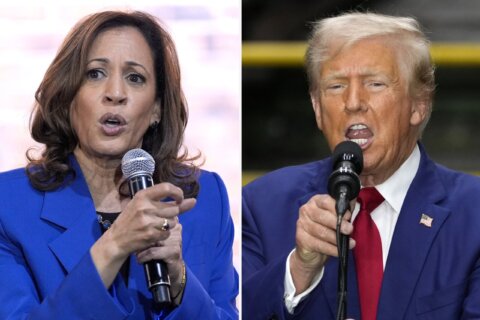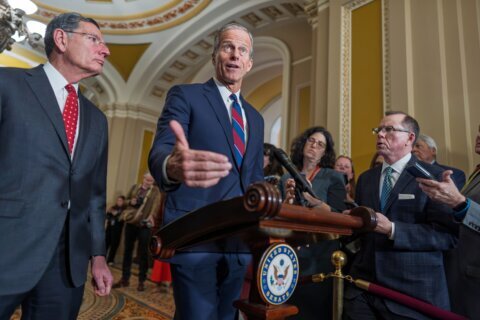The 2024 presidential election is increasingly looking like a Donald Trump-Joe Biden rematch and few voters seem excited about it.
With polls indicating voter disinterest, it’s no surprise that there’s a growing number of people are announcing or at least mulling a third-party run. That list includes the man with a famous last name: Robert F. Kennedy Jr., progressive activist Cornel West and possibly former Maryland Gov. Larry Hogan, who posted a political ad on X, targeting both parties for failing to show global leadership and highlighting his own record of standing with America’s allies.
Political experts and Hogan watchers are mixed on Hogan’s actual intentions to run.
“Perhaps that’s his way to sort of stay relevant,” said J. Miles Coleman, from University of Virginia’s Center for Politics. “It’s kind of the cynical view in me that this is his way to get out there.”
“Larry Hogan has great political antennae and isn’t going to go on a Kamikaze mission that he has no chance of winning,” Josh Kurtz, founding editor of Maryland Matters, told WTOP.
He added while Hogan may enjoy the speculation and attention, he does believe Hogan is sincerely keeping his options open.
“He’s right that Americans aren’t happy with the Biden vs. Trump option. But he also must know what impossible odds any third-party candidate would face,” Kurtz said.
What are the odds for running a competitive third-party race and what makes them so impossible?
“The process for getting on 50 state ballots involves an extraordinary amount of legal work, an extraordinary amount of signature collections — you’re subject to different rules in every state,” said Stephen Farnsworth, professor of political science at University of Mary Washington.
Some states require candidates to gather tens of thousands of signatures or charge high filing fees.
He said independent candidates spend more than half their energy just to qualify for the ballot, and that’s why so few of them proceed.
No Labels, the centrist third party, said it already succeeded in qualifying in over a dozen states, but Farnsworth said selecting an actual candidate may prove difficult.
“Let’s say Joe Manchin, for example, if he were the No Labels nominee, and he were to take some votes from Joe Biden and Donald Trump were to be elected would Joe Manchin be happy with that scenario. My guess is he would not,” Farnsworth said.
On the other hand, former Republican Liz Cheney, a vocal Trump critic, may not have the same concern about siphoning votes from Trump.
On its website, No Labels insists it only preparing for the possibility of offering its ballot line to an independent ticket and will not announce a candidate unless there is a viable path to outright victory.
If a candidate is able to get on enough state ballots, “I would say states that are at least worth 270 electoral votes,” said Coleman, adding that they have to raise enough money and get enough media attention.
They also have to qualify for the presidential debates if they want to be taken seriously.
The last time an independent presidential candidate qualified was in 1992, when Ross Perot joined candidates Bill Clinton and George H.W. Bush on stage. Third-party candidates have accused the Commission of Presidential Debates, the nonprofit corporation that runs presidential debates, of effectively shutting out independent options through its mandate that candidates must have at least 15% in national polls to qualify.
Farnsworth muses that the presidential debates may not end up being a big factor this cycle with Trump already refusing to participate in the Republicans debates.
“It may be the case that Trump is uninterested in participating in a 2024 debate at all,” Farnsworth said.
As for Hogan’s political future, political blog Montgomery Perspective speculated this week that he may run for governor again after Hogan posted a Facebook ad criticizing Maryland’s current budget deficit.
Get breaking news and daily headlines delivered to your email inbox by signing up here.
© 2024 WTOP. All Rights Reserved. This website is not intended for users located within the European Economic Area.








